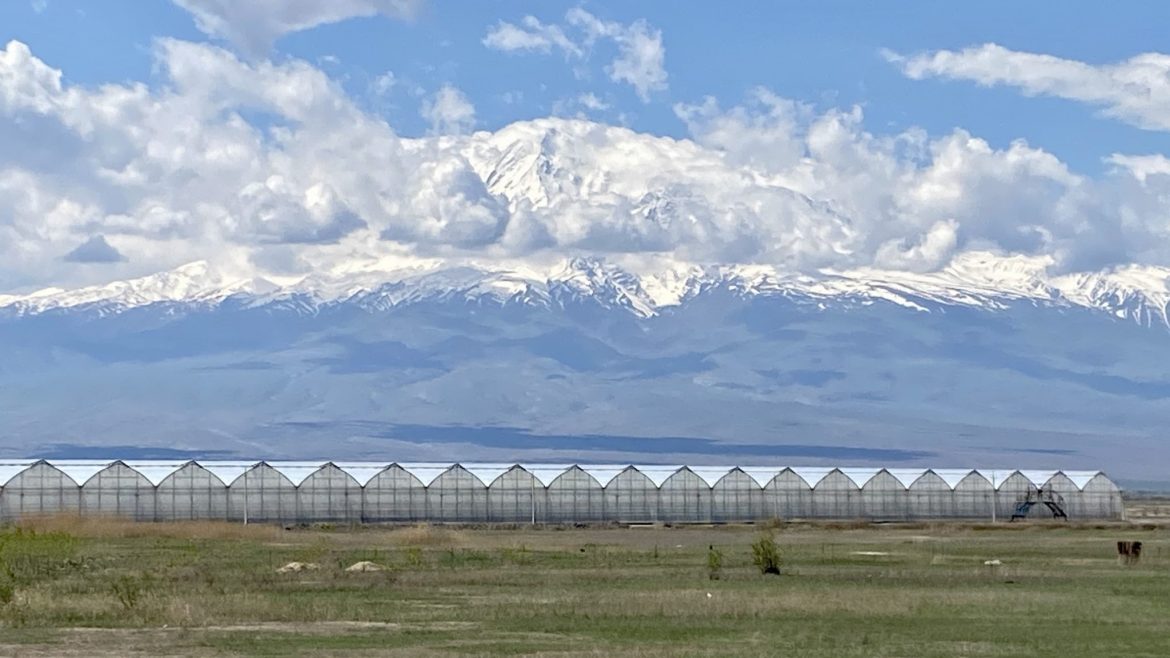While driving on a snow covered 2.500 meter high mountain pass 100 km west from Rasht we heart a loud sound coming from the engine/gearbox. All gears where still working, crawlgear, low/high gear, splitgearbox and drive/reverse worked all like before. But it was like someone was hammering on the cabin with a small metal hammer.
We didn’t want to be towed and have the risk of accidents or burned brakes going from 2.500 meter to sea level without using the engine-break and the gearbox, so we decided to keep driving to reach Rasht.
Here we found an Amico workshop where we found 2 teeth at the bottom of the gearbox. They coudn’t help us so we decided to ship the truck to Isfahan where our old Iranian friend, Mohammed from Tak Taku guesthouse & Overlanders campsite could help us. He speakes very good Englisch and understands internaional tourist. He found a workshop for us where we could take out the gearbox to see what was wrong.

After opening the main gearbox we found the damaged countershaft. Our Dutch friend and Unimog specialist Unimog Donald has it on stock. So we start posting request for people flying to Iran this week and who are willing to take the 11,4 kilo shaft for us. Not to many tourists are comming to Iran at the moment.
DHL is the only shipping company which is allowed to ship to Iran due to the sanctions but they would need more then a week and customs could still be a problem. Our problem was also the upcoming Nowruz, the Iran newyear. All workshops would then be closed from 19. March for at least 10 days.
An alternative would be Kirstin flying home, pick up the part and fly back, not only expensive, but she also needs to apply for a new Iranian visa which needs at the very fastest 3 days of processing time. And there is always a slight change of not getting a visa and then we would be in real trouble.
After a lot of investigation we found a company in Turkey who builds these shafts for Unimogs and is also supplying the Turkey army.
An Iranian citizen is allowed to fly to Turkey without a visa. So at once we had our solution. Mohammed, our host, is willing to fly to Istanbul, pick up the part, and fly back. In Turkey our dear friend Unsal organized the parts and delivered them to Mohammed at the Istanbul Airport.
Then the crazy thing happened, the flight from Iran had so much delay that Mohammed was not allowed to check in a suitcase with all the parts. He tried to take them as hand luggage but the security found it suspicious that an Iranian man, sweating, to much in a hurry and nervous, tried to take an 11 kilo piece of metal into the plane. The airport police took his passport so Mohammed would mis the flight and we had to book a new flight. For the next 20 hours there would be no flight to Esfahan so Mohammed had to fly to Tehran and take a 5 hour ride home. Unbelievable he did that for us! 👍❤️🇮🇷
Then there is the big question for us; what made this happen. We did an oil change 1.000 km before at an modern garage in Armenia. Did we use the wrong, to modern oil?
What does our truck really need? I do not have a workshop guide or truck manual and in the internet is not to much to find about our Unimog 2150.
What is the best and what is available in Iran, Kazakhstan, Mongolia and China for us???
Engine oil, gearbox, splitterbox, differentials and Portal axles?
We decided following:
Engine: 5W-30 of 10W40 (semi-) synthetisch
Gearbox, distribution box, crawler-gearbox and splitter gearbox : 75W90 GL4
Differentials: 75W90 GL4/GL5
Portal axles: 75W90 GL4/GL5




























































































































































































